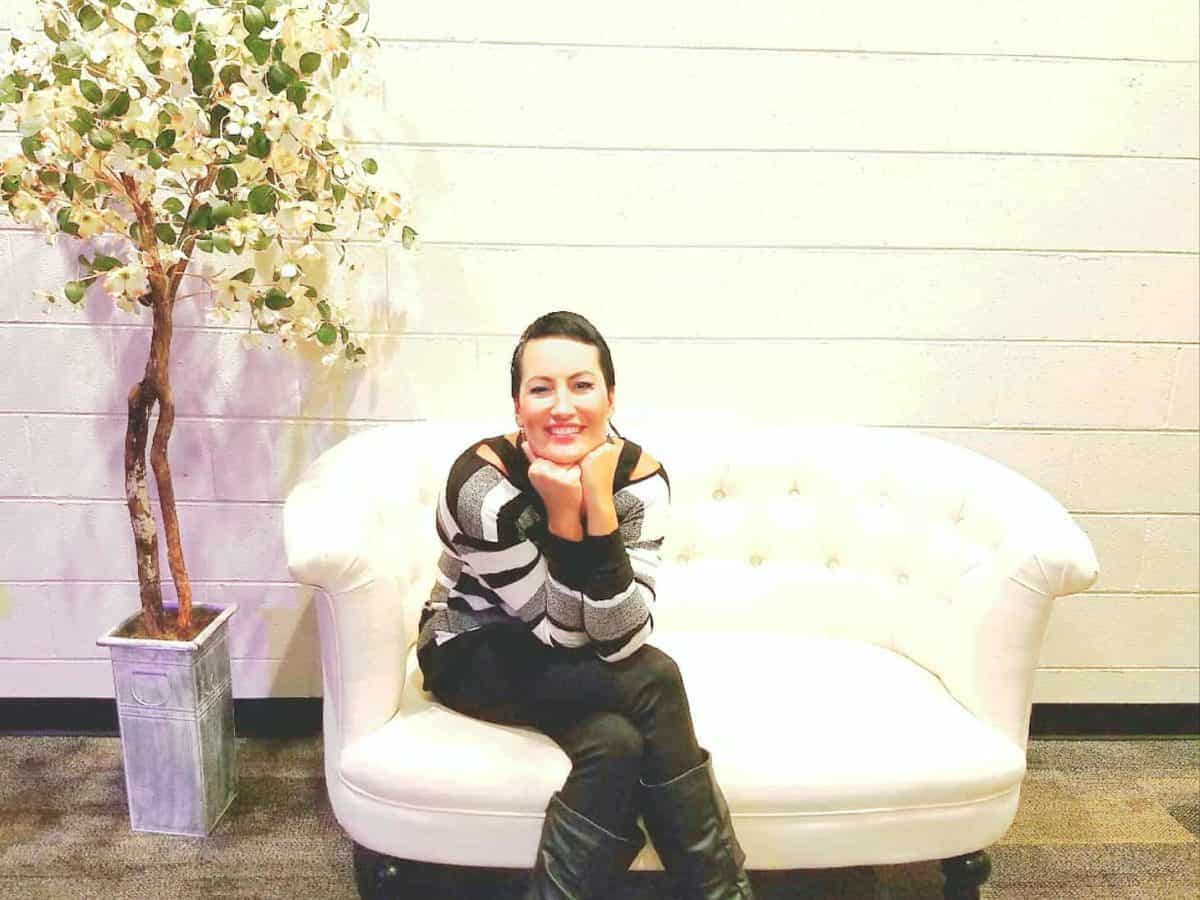

This is Katie Oslin’s fifth year as a school nurse at Anderson Elementary in New Hanover County. She is trying to do more for youth than take care of their physical needs. She is trying to serve their emotional needs as well. Her debut novel “The Details of My Reality,” hit book shelves in 2017. In it, she tells the story of a young college-bound woman who is able to learn, through a series of poor choices, what really matters in life.
We talked with Oslin about her work as a school nurse and her transition from medical practitioner to author. The following interview has been edited for length and clarity.


Granados: Tell me about being a school nurse.
Oslin: This is my fifth school year. I got into it because, after working in the hospital for so long, I wanted to work in public health, but I didn’t know exactly what area of public health I wanted to get into. I find that the kids have really increased my job satisfaction, more so than when I worked in a hospital. It’s very rewarding, it’s very fulfilling to be able to take care of the kids every day.
Granados: How long have you been writing?
Oslin: I have been writing pretty much since a teenager. I did a lot of poems and short stories, but “The Details of My Reality” is my first novel. It’s the first attempt I ever made at writing an actual book.
Granados: What made you decide to write a book?
Oslin: When I actually started the book, it was about three years ago. I have a son who is now 15 and I have more free time. A little bit, not a ton. He is an only child, so he was a huge part of my focus. He relied on me solely for his entertainment. He didn’t have brothers and sisters to play with or beat up. As he started to get older, he started to pull away from mom, and I was able to have time. I had the idea for the book, and I kind of made the schedule to fit the writing in because I still have the job at the school. I finished the book in about six months.
Granados: Where did the idea for the novel come from?
Oslin: It came partly from my own experiences growing up and being a young mother, but seeing some of the pressures, seeing what some of these young girls are faced with and go through. Even the high school girls, friends of mine, I know have had daughters who seem to be on a good path… and sometimes they meet a guy and things start to unravel and they start to make poor choices, and they don’t realize that the…decisions they’re going to make are going to effect the rest of their lives.
I wrote it as a young adult novel to hopefully help or inspire some young girls in the decisions they make. So they can take action and make better choices. So they can turn their life around when they start to go down a bad path.
Even my 80-year-old grandma read it and could relate to some of the things in the book. It’s kind of a trip down memory lane for the older adult.
Granados: Give us a synopsis of the novel…
Oslin: The book centers around the main character, Amy, who is college bound, very hard headed and thinks that she has her life very well mapped out. She is very quick to dismiss men in general, sometimes even her friends. She’s very closed off. So she meets this young man and he changes her point of view on some things. So she puts down her walls and allows him to get close, and she starts to find herself in very difficult circumstances, and she is forced to make some very difficult choices related to those circumstances, and life starts to unravel a little bit until she is able to take back control of her life.
By the end of the book, she is able to learn, even when she is making poor choices, that it is the little details in life that really matter, that we remember and that really resonate at the end of the day.
Granados: What did you do to get it published? What was the process like?
Oslin: I sent the book to hundreds of different literary agents because I found out very quickly that no publisher is willing to speak to you unless you’re already published or famous, and I was neither. Every day I was looking up different agents and companies that I could send it to.
To find an agent took almost another six or seven months, and the first “yes” I got I jumped at the chance. I wasn’t afraid to say no, but I didn’t know when another “yes” would come around. Once I started to work with him, the process of editing the book before he shopped it to publishers took almost a year. It was the entire manuscript every single time. And he had other clients that he was working with. He would go through the entire manuscript and send it to me and then I would go through the entire manuscript and send it back to him. It only took a few months to find a publisher.
Granados: You have a presentation you do on the six stages of writing a book. What are those?
Oslin: It starts off with “So I have this idea. Who’s my target audience? Why am I writing this book? What is my purpose in writing?” I have this phrase that I like to use a lot, I call it “purpose over popularity.” I feel like you need to have that purpose and that passion for what you’re doing.
The first stage would be like, you’re imagining what’s your idea, what’s the book going to be, when are you going to find time to write, why are you writing?
The next stage is the planning stage. Make an outline. Who’s the main character? What are their characteristics going to be? What are some of the main things you want to happen in the book? What is the message you’re trying to get across?
Third is creating, so that’s when you really start to write. I always, and I think a lot of writers, they say write even when you don’t feel like it. And then another thing I say in the creating process is let the characters come to life. I feel that I have an idea when I have a plan for the book and the characters. And sometimes when I’m writing, the characters take on a life of their own…and I tell people not to be afraid of that.
Stage four is, of course, editing. I do chapter by chapter as I write. I will admit it’s my least favorite part. Especially once I had the literary agent and going back and forth through the entire manuscript every single time, it can start to feel tedious. I wanted it to be the way I wanted it.
And design. Design is the next one. I researched other books in my genre to see what they looked like. I read the back of a book to get a brief synopsis. I would look at author photos and see how they represented the author. If it was a purposeful photograph, I made the photo on my book purposeful. I just didn’t want to be sitting in a chair somewhere. But that was my decision, so the design phase is just what you want.
Finally, the last stage was the publication process, working with the publisher, getting the final version sent to them and for my approval. Going over cover image, author bio, and the synopsis. And finally that wonderful day when the release day is set and the clock starts, and you just wait until you have it in your hands.
Granados: Are you working on something new?
Oslin: I’m in the editing process of it. It’s a book called “Passed Down.” In this book I wanted to use more of my medical and nursing knowledge. It focuses on an infertile couple who finds a doctor who is willing to work with them, but they have to work with him on his terms. He wants to make designer babies — genetically advanced, where they can pick out characteristics — so basically he’s turning their child into a science experiment.
I didn’t want to be a series writer and just continue with the same story and the same characters. It was fun to kind of start over and start fresh. I knew someone who struggled and they did in vitro, so I got to thinking about that, and I remember college, and genetics, and we discussed this whole concept of designer babies, and the people who are trying to weed out all these diseases. I thought it would be fun to talk about nature versus nurture. Is it something inherent, or is it part of how they’re raised?
Granados: Do you think you will one day quit to write full time?
Oslin: Not in the near future. It works really well now with my schedule. One day, ideally, I would like to write full time, but I would still like to work as a nurse. Mission work, disaster relief. And I would like to write about some of the things that I see.
Read more about Katie Oslin’s debut novel, “The Details of My Reality,” here.


